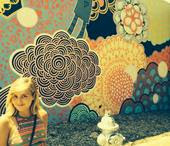Since beginning the Reading Education class and reading the article, The Jones Family's Culture of Literacy, I have been extremely interested in the way that a student's history, upbringing, and culture can shape their future in education. Before, I had never really considered the significance these things can have on the way that the child sees reading, learning, or education in general, but it is clear that the way a child has first experienced reading as a major impact. For some families, reading their children a bedtime story is a natural occurrence, but for other families (let's say a single mother working two jobs), these children may not have the luxury of getting read to regularly. Some families may see education as a priority, the pathway to success, while others may not put such a strong emphasis on education. Whatever the situation may be, a teacher is expected to be able to effectively teach them and provide them with the best education possible.
When a child enters kindergarten, it may be more difficult to figure out the background or history of a student and their family. Some children may have had the experience of pretend reading, a concept introduced in Chapter 3 of Classrooms That Work: They Can All Read and Write. Pretend reading is when a child acts like they are reading by looking at the pictures and mocking what an adult may do when they read to them. Although it is not real reading, this is still an important step for children who will begin learning to read soon.
So what happens to those children who don't pretend read? What happens to those children who are never read to by their parents?
While pretend reading is important, if a student has not experienced this as much as others, they will still be on the write track to learning to read. Chapter 3 discusses many concepts and activities that can build a firm foundation for reading. One activity particularly stood out to me, because I can remember doing it when I was in the first grade: student interviews. This activity involves picking one student each day to be interviewed in the classroom. The student for the day gets in front of the class and is interviewed. The teacher asks them questions so that the children can get to know one another in their classroom. The teacher also takes this opportunity to discuss the child's name, the letters that compose it, the letter arrangement of the name, etc. These basics introduce the students to concepts that they will need to begin learning.
What activities in elementary school were memorable for you and also incorporated basic literary concepts?
This picture shows an activity that I found on Pinterest, originally sourced from activity-mom.com.
Students can practice matching the words they find on bottle caps to the sentences that they have written on strips of paper. This will help them in recognizing the basics of sentence structure. Students can see that a bunch of words come together to form one big sentence. They can count the words that form the sentences as well. This activity is similar to the activities discussed in Chapter 3 of Classrooms That Work: They Can All Read and Write.
Subscribe to:
Post Comments (Atom)
Meet the Reader

- Madison Weber
- Hi! My name is Miss. Madison and I am your second grade teacher this year! First of all, let me begin by saying how excited I am to have each one of you in my class! We are going to have a fun and exciting year. I have wanted to be a teacher for as long as I can remember. Students can really change the world, you know. I was born in Washington, DC but have lived in Nashville, TN for the majority of my life. I have one sister who is three and a half years younger than me. I love to dance, cook, adventure outside, and have fun with my friends.

No comments:
Post a Comment